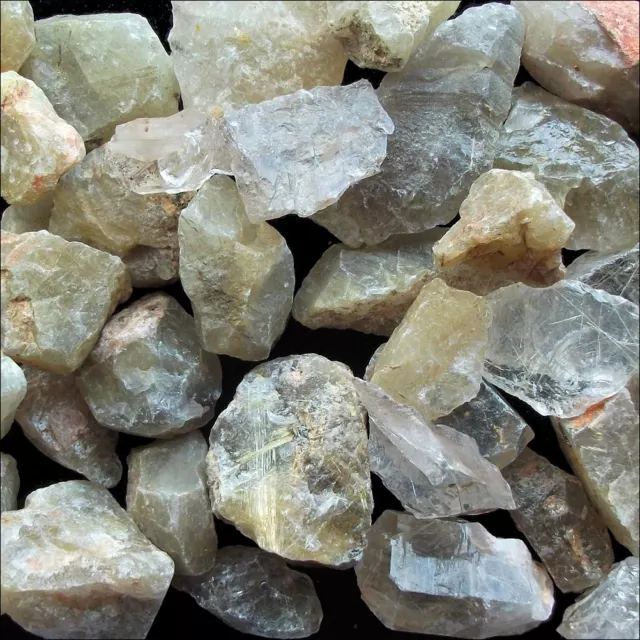Copal ambre ancien résine d'arbre brut brut naturel cristal brut joyau
|
Copal Amber You will receive several pieces of crystal, the total weight will be at least the amount quoted in the variation. Each piece has it's own unique shape and internal markings, for this reason the item received may differ slightly from those shown in the photograph. Copal is a name given to tree resin that is particularly identified with the aromatic resins used by the cultures of pre-Columbian Mesoamerica as ceremonially burned incense and other purposes. More generally, the term copal describes resinous substances in an intermediate stage of polymerization and hardening between "gummier" resins and amber. The word copal is derived from the Nahuatl language word copalli, meaning "incense". To the pre-Columbian Maya and contemporary Maya peoples it is known in the various Mayan languages as pom (or a close variation thereof), although the word itself has been demonstrated to be a loanword to Mayan from Mixe–Zoquean languages.[citation needed] Copal is still used by a number of indigenous peoples of Mexico and Central America as an incense and during sweat lodge ceremonies. It is available in different forms. The hard, amber-like yellow copal is a less expensive version. The white copal, a hard, milky, sticky substance, is a more expensive version of the same resin. Copal was also found in East Africa (the common species there being Hymenaea verrucosa), initially feeding an Indian Ocean demand for incense. By the 18th century, Europeans found it to be a valuable ingredient in making a good wood varnish. It became widely used in the manufacture of furniture and carriages. It was also sometimes used as a picture varnish. By the late 19th and early 20th century varnish manufacturers in England and America were using it on train carriages, greatly swelling its demand. In 1859 Americans consumed 68 percent of the East African trade, which was controlled through the Sultan of Zanzibar, with Germany receiving 24 percent. The American Civil War and the creation of the Suez Canal led to Germany, India and Hong Kong taking the majority by the end of that century. East Africa apparently had a higher amount of subfossil copal, which is found one or two meters below living copal trees from roots of trees that may have lived thousands of years earlier. This subfossil copal produces a harder varnish. Subfossil copal is also well-known from New Zealand (Kauri gum), Japan, the Dominican Republic, Colombia and Madagascar. It often has inclusions and is sometimes sold as "young amber". Copal can be easily distinguished from genuine amber by its lighter citrine colour and its surface getting tacky with a drop of acetone or chloroform. |
- Condition: Neuf
- Minimum Weight: 10g
- Gemstone: Amber
- Custom Bundle: No
- Main Colour: Black
- Natural/Synthetic: Natural
- Modified Item: No
- Colour: Gold
- Brand: Green Cross Toad
- Unit Type: Unit
- Style: Traditional
- Features: Natural
- Country/Region of Manufacture: Dominican Republic
- Unit Quantity: 1
- Room: Any Room
PicClick Insights - Copal ambre ancien résine d'arbre brut brut naturel cristal brut joyau PicClick Exclusif
- Popularité - 56 personnes suivent la vente, 0.0 de nouvelles personnes suivent la vente par jour, 3.683 days for sale on eBay. Super grande quantité suivi. 377 vendu, 10 disponibles.
- Meilleur Prix -
- Vendeur - 75.138+ articles vendu. 0.4% évaluations négative. Grand vendeur avec la très bonne rétroaction positive et plus de 50 cotes.
Les Gens ont Aussi Aimé PicClick Exclusif

Rutilated Quartz Mineral Specimen Raw Natural Rough Crystal Gridding Gem
EUR 3,60 Achat immédiat 11d 22h
Celestite Raw Crystal Natural Rough Mineral Specimen Celestine Blue Geode Druzy
EUR 2,92 Achat immédiat 3d 21h
Chrysocolla Copper Ore Mineral Specimen Raw Natural Rough Crystal
EUR 3,50 Achat immédiat 19h 23m
Labradorite Crystal Raw Rough Natural Mineral Specimen Strengthens Trust
EUR 2,92 Achat immédiat 9d 1h
Pink Peruvian Opal Crystal Mineral Raw Rough Stone Natural Specimen
EUR 2,95 Achat immédiat 7d 19h
